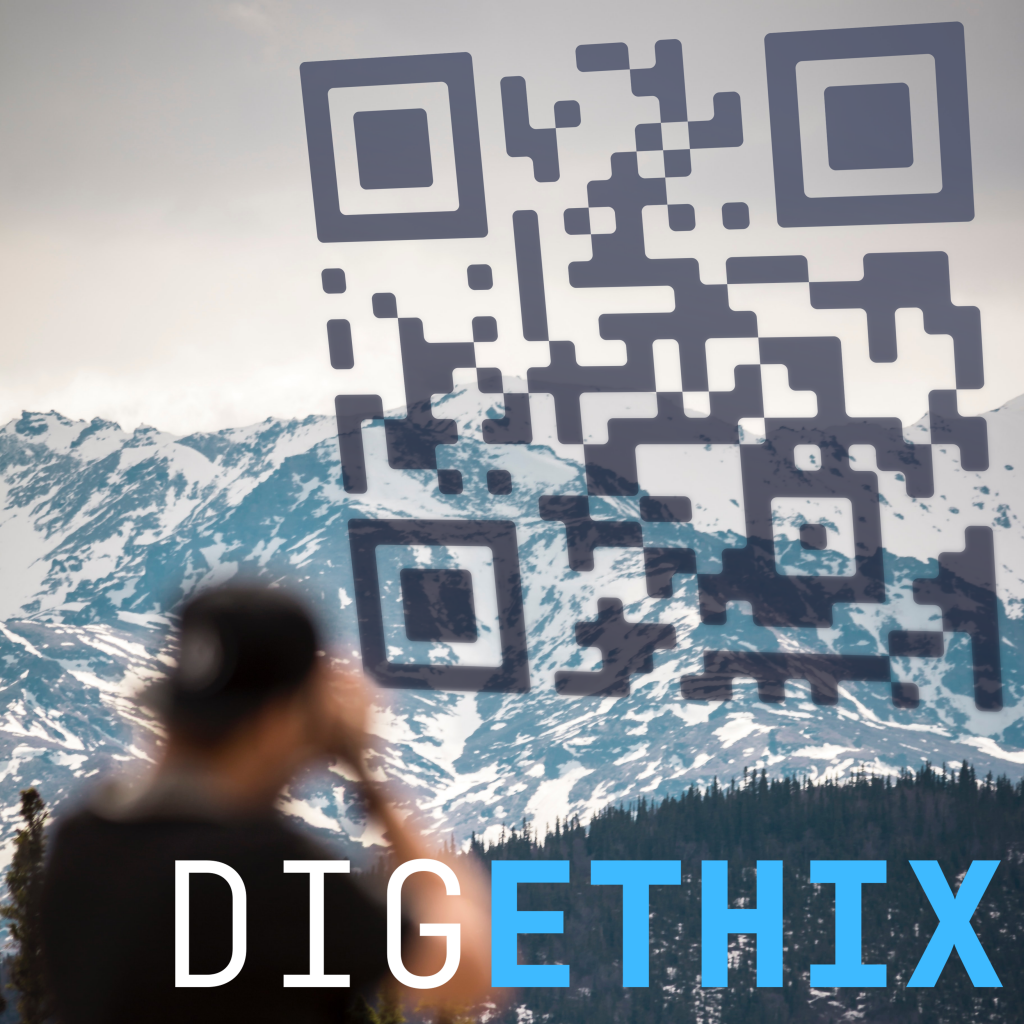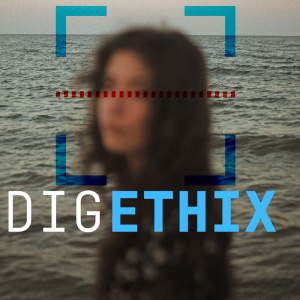The first season of our podcast DigEthix, hosted by CMAC Doctoral Fellow Seth Villegas, has wrapped. The podcast breaks down issues of ethics and technology from both a technical and sociopolitical perspective. Our goal is to help the next generation of technologists to build better systems and to avoid potential ethical pitfalls. We take a look back at the first season by discussing the graphics used for each episode.
Episode 1: Data Science, Interdisciplinary Research, and the Problem of the Humanities with Wesley Wildman
The DigEthix QR code hangs ominously (or humorously) in the sky for this episode thumbnail. It adds a level of alternation and a feel of augmented reality to the image. In this episode, Dr. Wesley Wildman spoke about why a podcast like DigEthix is necessary and what CMAC can bring to the conversation of technology and ethics through the perspective of humanities and philosophy. It’s difficult to say what the next generation of technical and ethical problems will be. Using the humanities and philosophy to approach them allows us to break the problems down in a way that is abstracted from the circumstances.
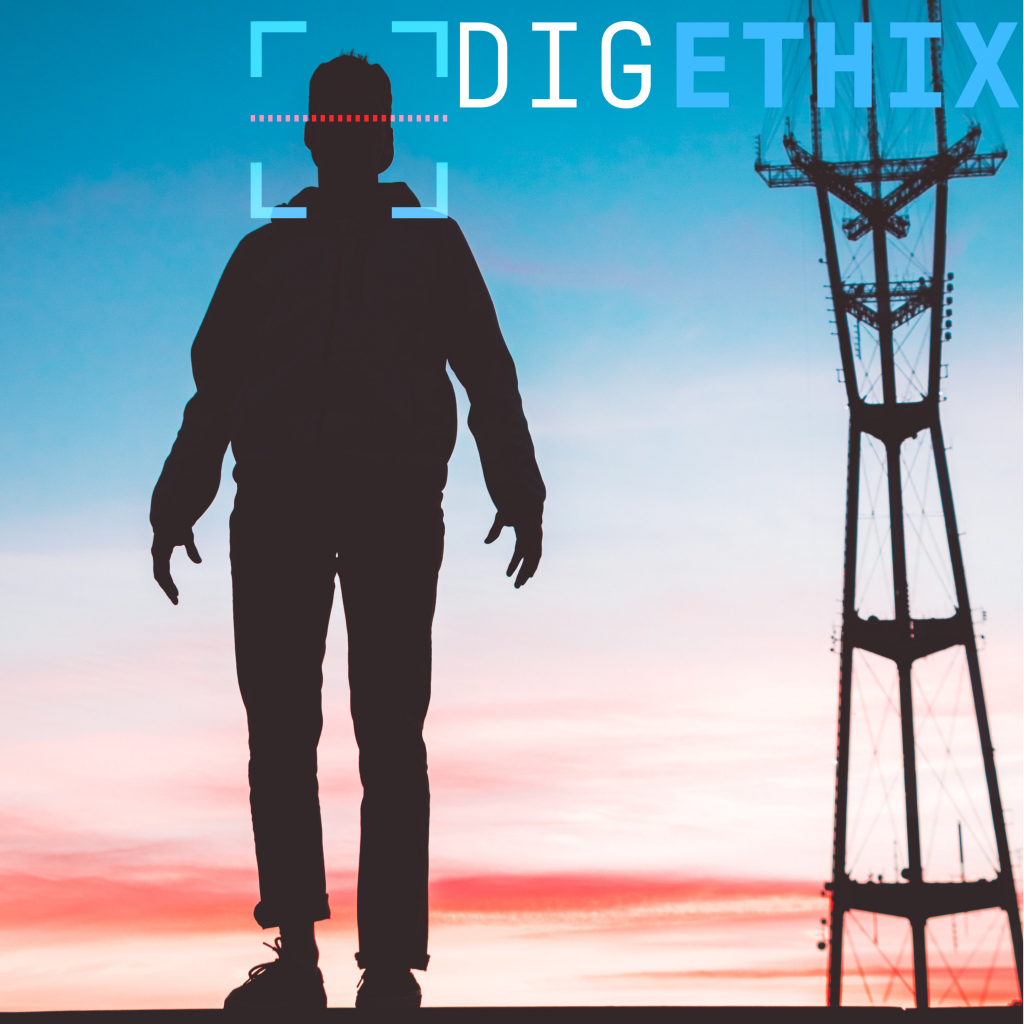
Episode 2: Neurofeedback, Technodelics, Brain Stimulation, and the New Spirit Tech with Kate Stockly
In this image, the scale of the person is intentionally similar to the scale of the radio tower in the background. This sort of “surveillance aesthetic” emphasizes the current technological space, where we are often being watched and we’re unsure of what’s coming next. Kate Stockly discusses some of these future technologies on the horizon, particularly those related to spiritual experiences.

Episode 3: Simulation Research and Application with F. LeRon Shults
Data tracking is closely related to how simulation research is used to break down people’s lives. Machines and simulations that are powerful enough to simulate our day-to-day actions exist and data tracking feeds into them. However, the use of simulation in research relies on more than this knowledge itself, which can be deployed for various reasons. This graphic shows how universal data tracking has become, often in ways that we feel we have no control over.
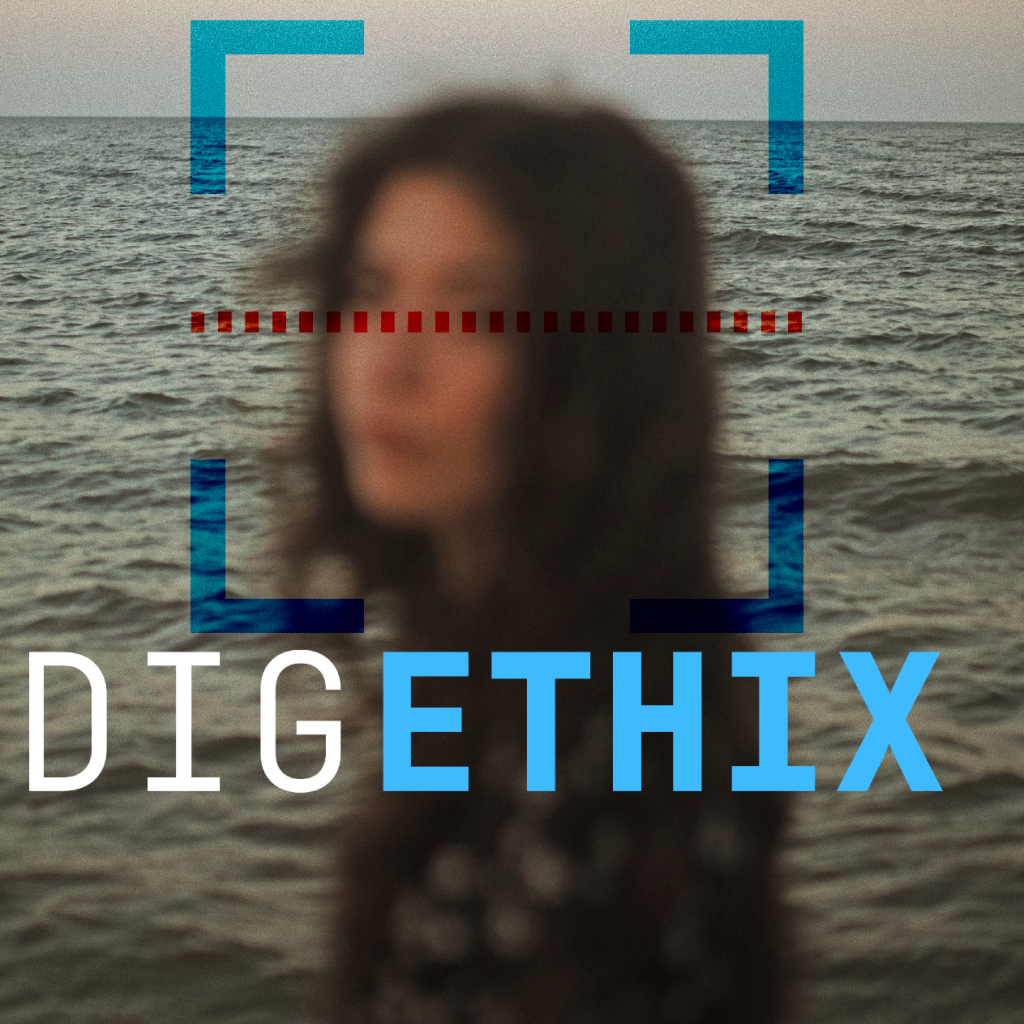
Episode 4: Digitality and the New Aesthetic with Alex Nielsen
There’s a technical failure happening in this image that draws the focus away from the perceived subject and onto the background. The computerized box around the person’s face emphasizes that ominous presence of technology in a way that reflects the conversations the podcast aims to have. This episode discusses the aesthetics and the branding decisions that went into the podcast, which is best expressed by the art itself.
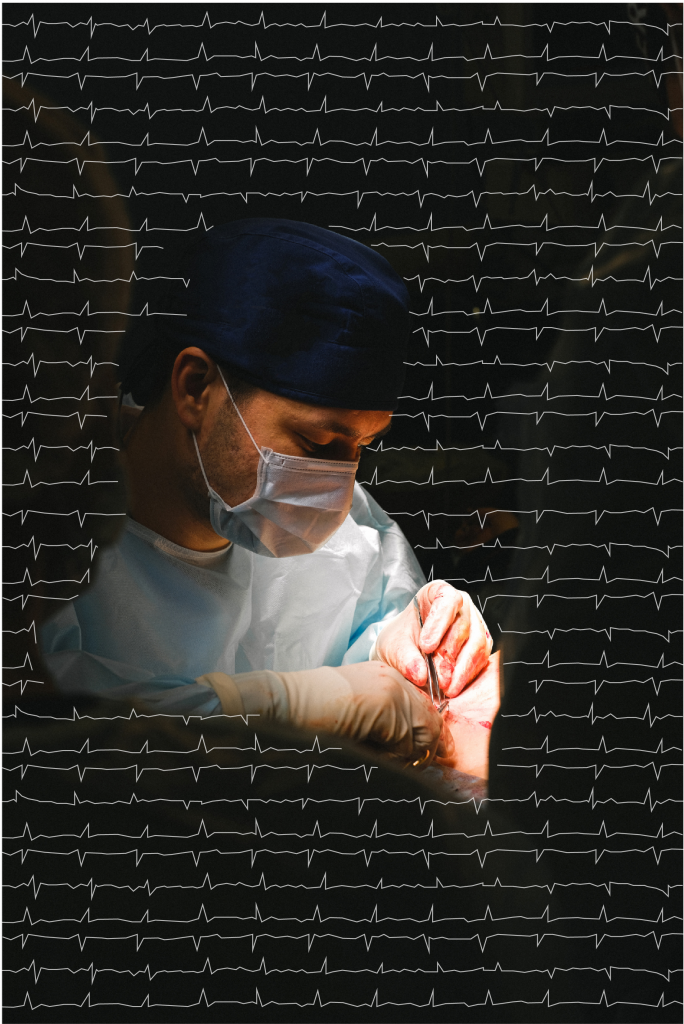
Episode 5: Black Maternal Mortality and the Informatic Problem of Personal Experience with shaunesse’ jacobs
The relationship between patients and medical practitioners relies on trust and accurate information. When patients don’t trust their practitioners, they may not feel comfortable sharing all the information that practitioners need to properly treat them. Similarly, when practitioners don’t trust their patients do provide accurate information, they may be less likely to listen to them. shaunesse’ jacobs discusses public health crises that are related to this kind of dynamic, particularly rates of maternal mortality in Black Americans. The heartbeat monitor overlay in this image gives it a harsh look, almost like barbed wire.
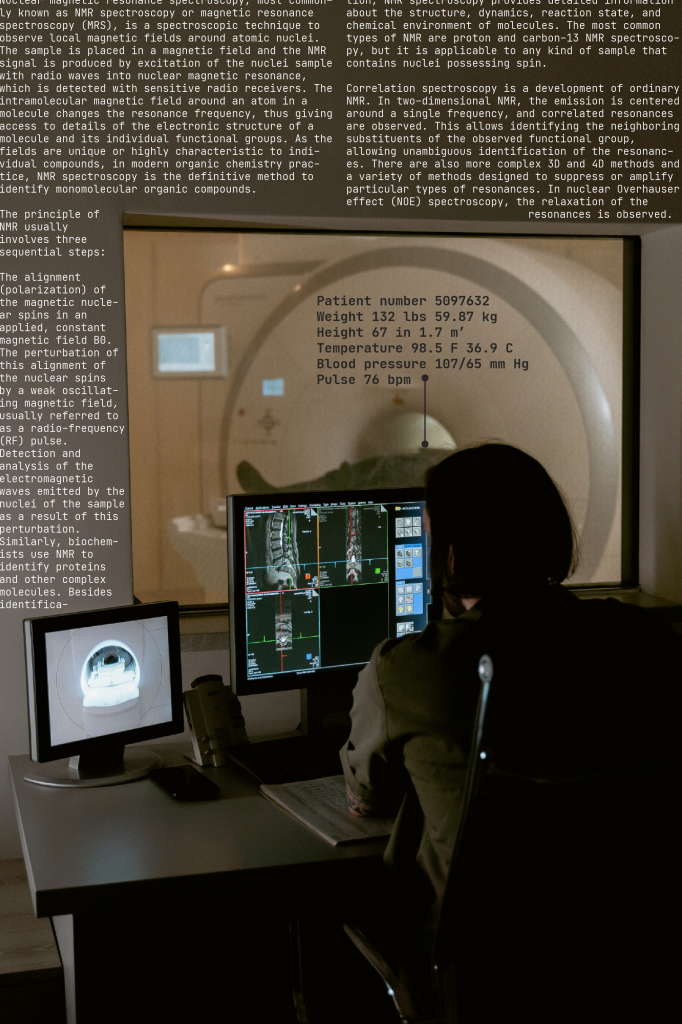
Episode 6: Using Data to Address Inequities in Healthcare with Muhammad Ahmad
Along the lines of healthcare and data, this episode discusses the tension that arises when patients feel like their personal information and experiences as a patient become impersonal data to practitioners. We can use data as a tool to highlight public health disparities like this and build levels of trust between patients and their practitioners. This graphic aims to show the depersonalization of that data, which completely obscures the patient themselves in the image. Instead of seeing the person undergoing an imaging test, we are only able to see the data and statistics that “identify” the person.
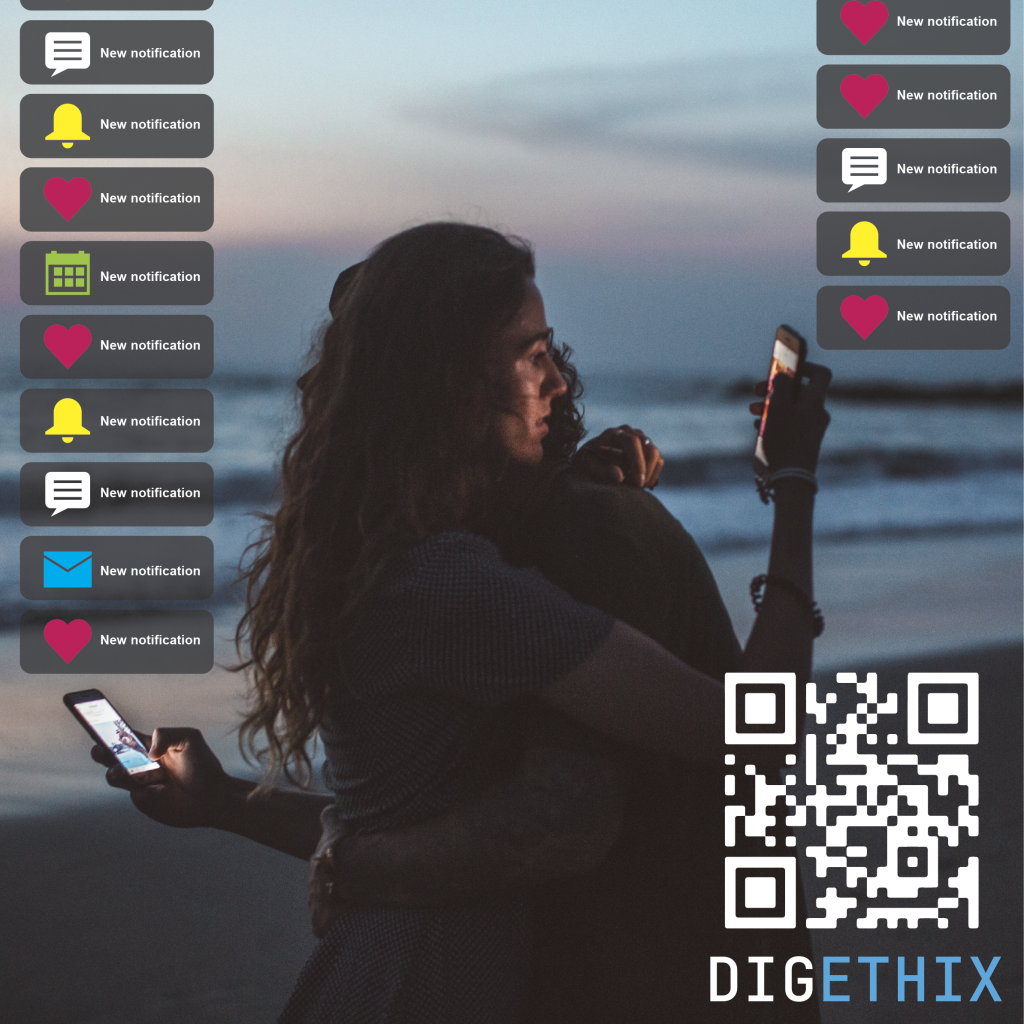
Episode 7: Artificial Intelligence, Emotion, and What Makes Us Human with Noreen Herzfeld
Humans are unique because of our relationships with each other and the way we experience the world around us. Younger generations are growing up with access to technology on a different level than we’ve ever seen. This creates an unpredictable future for human interaction, expressed here by two people who are distracted from togetherness by a constant stream of notifications. It can be hard to identify all the ways we are mentally tethered to our devices and what the trade-offs are.
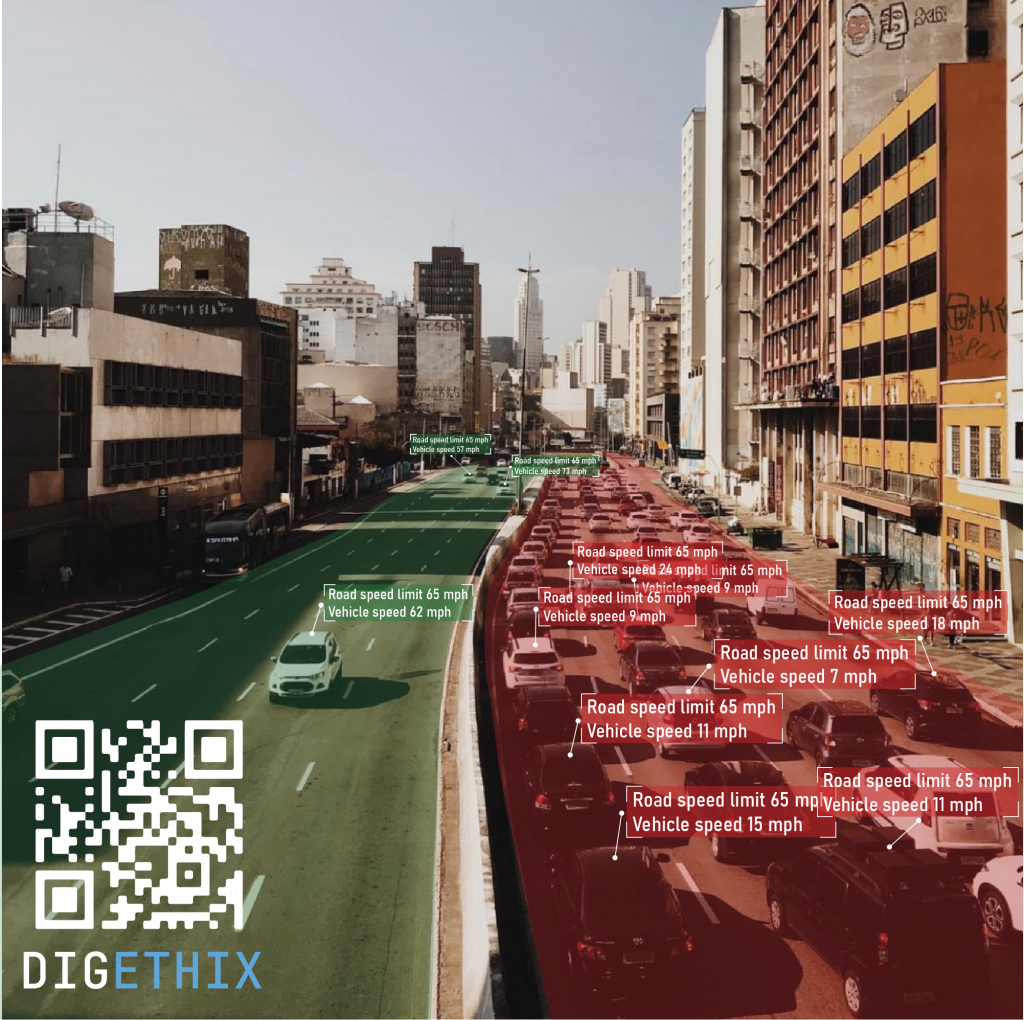
Episode 8: Critical Thinking and the Process of Ethics in Technology
Having a critical eye when assessing new technologies allows us to be realistic about its applications. The same concepts have to be taught in different ways and through different processes for certain audiences and circumstances. This graphic represents the process of slowing down to make these judgements without getting swept away with the promises of new technologies.
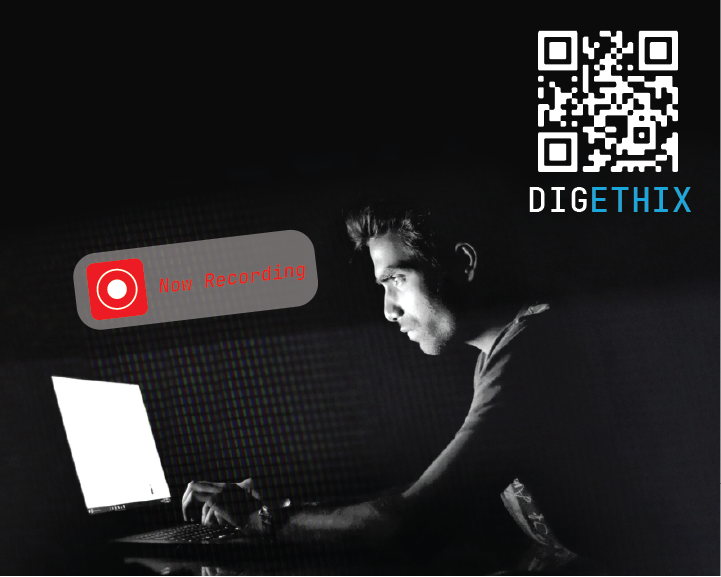
Episode 9: Pegasus NSO Spyware and the Business of Surveillance
Even when we’re not actively being watched, there is little opportunity for privacy. This causes many consumers to be wary of being watched at all times. This episode discusses the idea of boundaries between us and technology in an era of surveillance. Seeing the bold, red message acknowledging that the computer is “now recording” emphasizes the assumption we have that we may always be under a watchful eye.
DigEthix will resume on September 1, 2021, with the first episode of season 2. Stay tuned to their website and social media accounts in the meantime.

